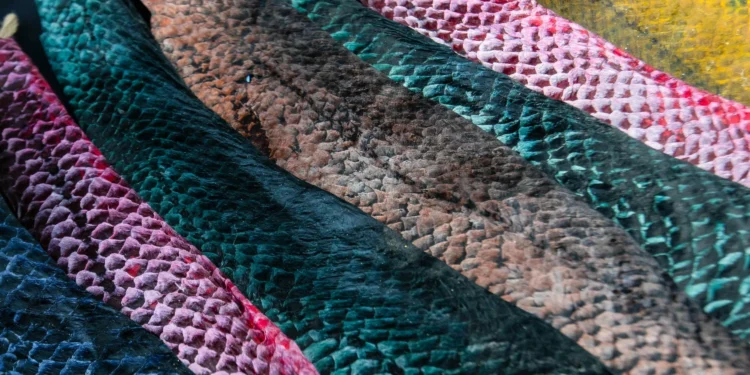On a beautiful beach in Costa Rica, as the sun begins to set and the fishermen return with their catch of the day, two women can be seen hard at work on a slimy sea bass skin. With focused determination, they rub, scrape, wash, and tan the hide, transforming it into a valuable material that will be used for various purposes.
These two women are part of a small community of skilled artisans who have been practicing the art of tanning fish skins for generations. This traditional craft has been passed down from mother to daughter, and it is a vital source of income for many families in this coastal region.
As I watch them work, I am amazed by their skill and dedication. They handle the slippery skin with ease, using sharp knives to scrape off any remaining flesh and scales. Then, they carefully wash the skin to remove any impurities and prepare it for the tanning process.
Tanning is a crucial step in the transformation of the fish skin. It involves treating the skin with natural substances to make it more durable and resistant to decay. The women use a mixture of salt, water, and natural oils to tan the skin, a process that can take several days to complete.
As they work, the women chat and laugh, their hands moving in a rhythmic motion as they rub the skin with the tanning mixture. It is evident that they take great pride in their work and enjoy every step of the process. Their passion for this craft is contagious, and it is clear that they have a deep connection to their cultural heritage.
Once the tanning process is complete, the skin is left to dry in the sun. This is a crucial step as it helps to preserve the skin and gives it a beautiful golden color. The women carefully monitor the drying process, making sure to turn the skin regularly to ensure even drying.
After a few days, the skin is ready to be used. It is now a valuable material that can be used for a variety of purposes. In the past, fish skins were primarily used to make clothing and footwear, but today they are also used to create accessories such as bags, wallets, and even jewelry.
The women in this community are not only skilled in tanning fish skins, but they are also talented designers. They use their creativity and knowledge of traditional patterns and techniques to create unique and beautiful pieces. Each item is a work of art, and it is a testament to the women’s dedication and craftsmanship.
The demand for fish skin products has been steadily increasing in recent years, and these women are at the forefront of this growing industry. Their products are not only beautiful but also sustainable. By using fish skins that would otherwise go to waste, they are contributing to the conservation of marine life and promoting eco-friendly practices.
Moreover, the income generated from the sale of these products has a significant impact on the lives of these women and their families. It provides them with a stable source of income and allows them to support themselves and their children. It also gives them a sense of empowerment and independence, as they are able to contribute to their household income.
As the sun sets on the beach, the women finish their work for the day, and I am left in awe of their skills and determination. They are true artisans, preserving a traditional craft and using it to create beautiful and sustainable products. Their hard work and dedication are an inspiration, and I am grateful to have witnessed this unique and valuable art form.
In a world where mass production and fast fashion dominate, it is refreshing to see the beauty and value in traditional crafts. These women are a reminder that with passion, skill, and determination, we can create something truly special. So the next time you see a fish skin product, remember the hard work and dedication that went into creating it, and support these talented artisans who are keeping their cultural heritage alive.









